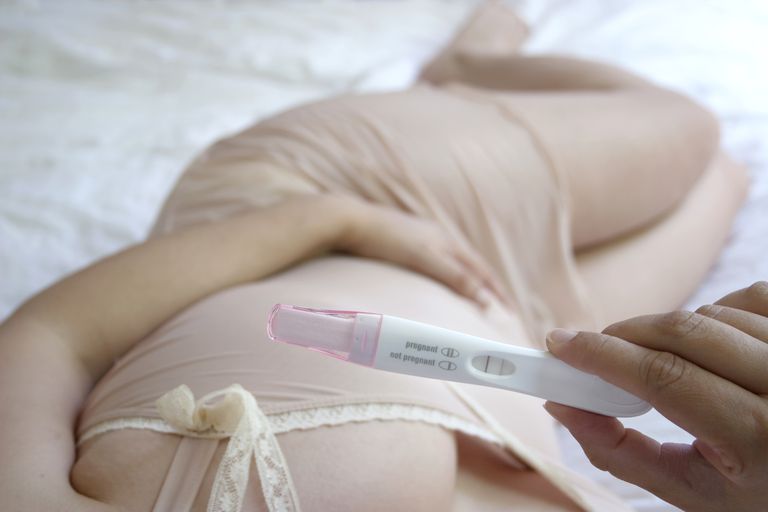This is where the blast cyst develops and develops. The early stages of pregnancy and it’s a natural process that occurs a week after childbirth. This is a Starting Signs of Implantation.
Almost 1/3rd of all women experience implantation bleeding and at times it’s mistaken for period bleeding too especially if it occurs at the time of the menstrual cycle.
Usually and largely implantation occurs around 9 to10 days after childbirth but at times it happens as early as 6 to 7 times and as late as 12 days.
Thus if the ovulation Occurs on the 14th day following a period then implantation can occur on the 23rd day
When ovulation occurs the ovaries release eggs. The zygote since the fertilized egg is called then travels down the fallopian tube.
It is during this time that the zygote multiplies many times and forms a blastocyst. This blastocyst subsequently passes the uterine cavity in 5 to 6 days post-fertilization. Afterward this blastocyst implants in the uterus in 1 or 2 days.
The entire process starting from fertilization to implantation takes 6 to 10 days. Thus the implantation will ordinarily occur between the 20th and 24th day of their female’s regular menstrual cycle.
Each pregnancy is unique and thus the implantation symptoms vary from female to female. Also, there might be a difference between the initial and subsequent pregnancies. Sometimes pregnant women don’t encounter any implantation symptoms. Sometimes they encounter all of them or some of them.
The body begins to change shortly after implantation takes place. Breasts become more tender and there’s soreness in the breasts. Also at times, there is swelling of the breasts. That happens due to the levels of this hormone that increase after conception. Also sometimes these changes in the breasts are apparent in the time of childbirth and also a week after ovulation.
This is only one of the most obvious and primary indications of implantation. This happens once the embryo embeds into the uterine wall.
Implantation bleeding is not as red as normal period blood and is more of pinkish and scanty. Also, this bleeding isn’t consistent and also doesn’t form clots.
This implantation bleeding continues on and off and lasts from a few hours and sometimes for two days.
IMPLANTATION CRAMPING
Implantation cramping is quite similar to periods cramping. Cramps are milder and less painful than period cramps. The pregnant female will experience cramping in her lower abdomen and back and this may last for a few days.
Also at times, the cramps are accompanied by constant contractions from the esophageal wall. If you are having extreme pain and the pain is unbearable and lasts a long time then now is the time to observe a physician or a Doctor.
As per week passes after implantation the feminine will feel a more frequent urination urge. As the body is producing more blood now for two bodies consequently the blood supply increases and blood soils up in the gut. Due to the increase in blood supply in the pelvic region, there is pressure on the bladder. Because of this pressure, there’s an increase in the impulse to urinate.
During implantation that the BBT or basal body temperature increases. And this can help in discovering and confirming pregnancy. You don’t have to keep an eye on your body temperature constantly and should do it only if you wish to become pregnant.
While you try to get pregnant you should observe and chart your BBT. It’s because of the rise in the progesterone hormone that the BBT rises during ovulation. This fever remains high at the time of implantation.
EXPERIENCING HOT FLASHES
Experiencing hot flashes isn’t a really frequent sign of implantation and may last for about 15 minutes in the time of implantation. Hot flashes are due because of the growth in hormone levels within the body through implantation.
Hot flashes aren’t a sure shot sign of pregnancy but it may imply to it as a few women do experience them on implantation.
FOOD AVERSIONS AND CRAVINGS
This is one notable sign of implantation. Because of the hormones which are created at implantation, these hormones change a pregnant female’s likes in dislikes in food.
There might be food aversions and also craving for food that is certain. Thus you can count this as a fantastic indicator of implantation and pregnancy.
CERVICAL MUCUS DISCHARGE
After implantation, there is an increase in the hormone progesterone and due to the cervix tends to swell and there’s a rise in blood flow to it. Additionally, the glands enlarge and the glands are stimulated by the hormones to produce an increased amount of cervical mucus.
The cervical mucus after implantation looks pinkish or light brown because this mucus comprises some blood.
CONFORMATION WHETHER IMPLANTATION IS SUCCESSFUL
It is possible to confirm your pregnancy only through a pregnancy test like a serum beta hCG test or a urine test. Also if you’re experiencing implantation bleeding then you should wait a few times and then take a home pregnancy test. In this case, there are more odds of proper determination due to the hCG levels grow.
Additionally, you can go for a sonogram to understand if the embryo is attached to the uterine wall and implantation is happening. After 3 to 4 weeks of implantation, the embryo can be observed through a sonogram.
Also at times, you might be experiencing the signs of pregnancy but find a negative in the pregnancy test.
This sometimes happens because of less amount of the hCG hormone. In cases, it takes up to 10 days following implantation to generate sufficient hCG in the body to give an affirmative outcome.
Author



